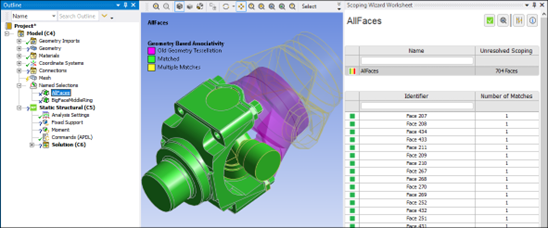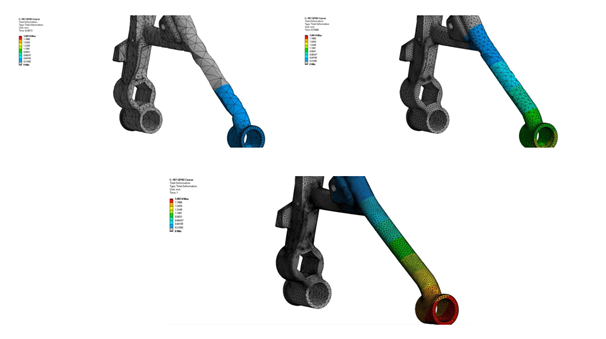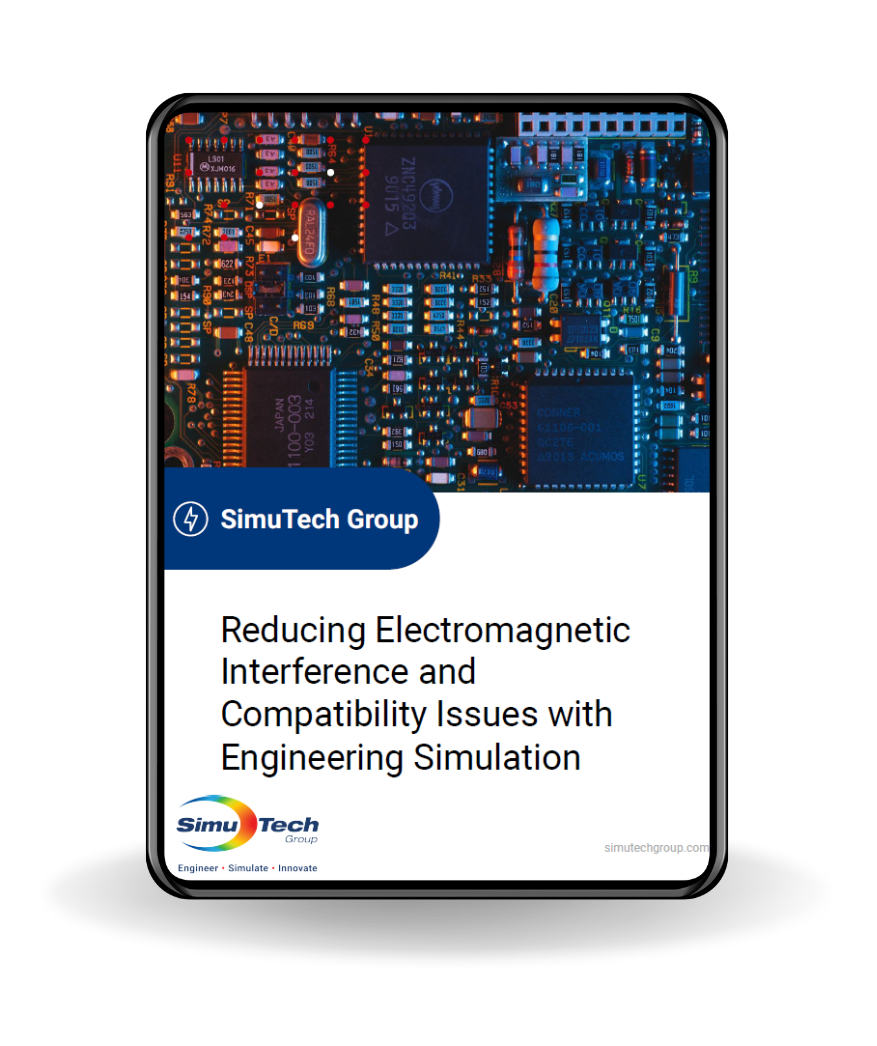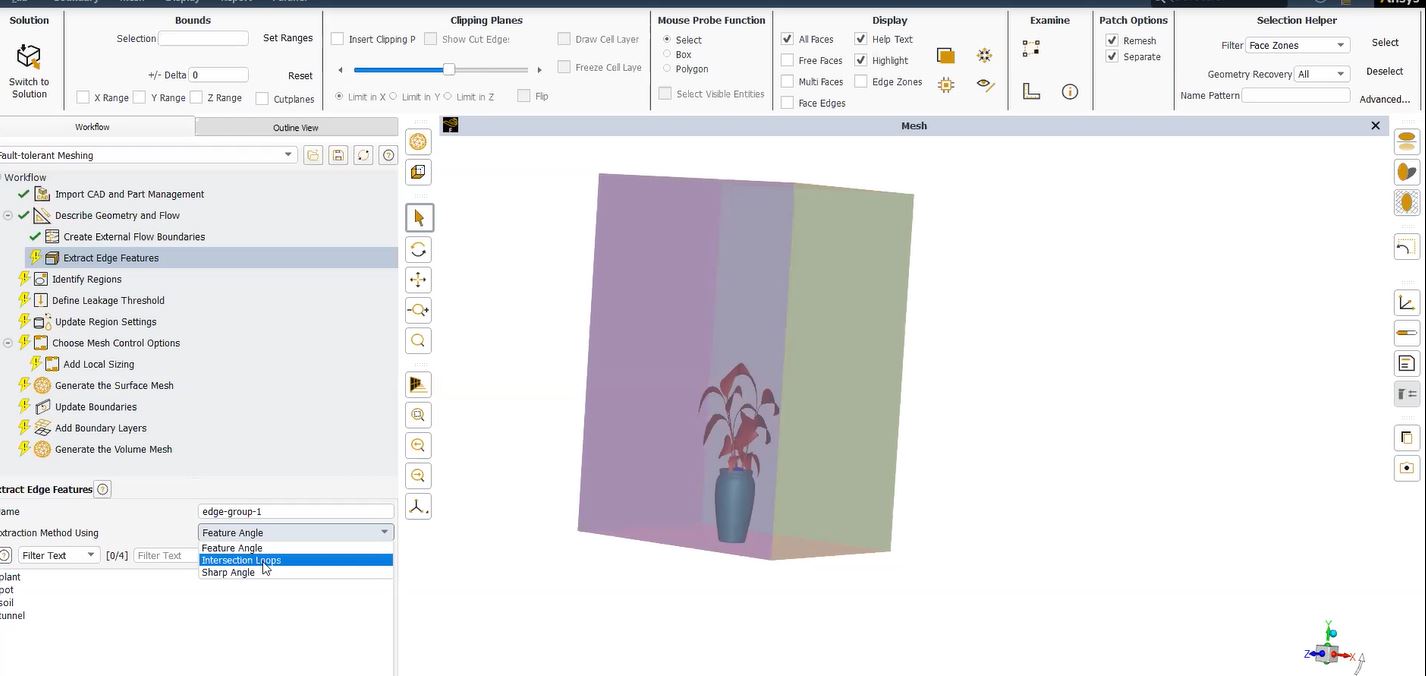Analyzing Circumferential (hoop) Stresses via PIPE16
Ansys Mechanical APDL | Archived Elements Refresher
Ansys includes a pipe element PIPE16 in its list of Archived Elements. This element is still of interest to a variety of users.
When internal pressure is applied to a PIPE16 element, and no other load, the circumferential (hoop) stresses of a cylinder are expected.
Experimentation shows that the stress in the results file is based on the circumferential stress of a thick-wall cylinder, and is presented for the outside diameter, not the inside diameter.
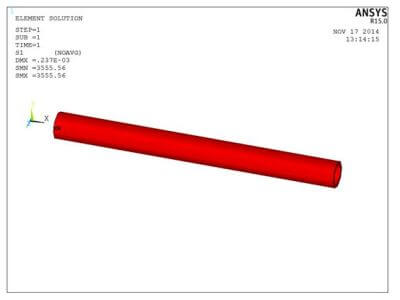
This article presents a simple example that illustrates the result.
Mechanical | PIPE16 Straight Pipe
The PIPE16 straight pipe element is still used by some Ansys customers, despite its Archive status in recent Ansys versions. A question recently arose about the circumferential stress reported by this element type, when it is subject to internal pressure and not other loads.
It turns out that the stress reported is that of a thick-walled cylinder hand calculation for the outside radius of the pipe. Although the inside radius stress is higher in a thick-walled cylinder, the outside radius stress is reported. This permits it to be combined with bending stresses, which are highest at the outside radius.
The following APDL commands create a 1-element model with PIPE16, apply inside pressure, and present results that should show outside radius circumferential stresses:
*For modeling Pipe inside Pipe contact, click HERE.
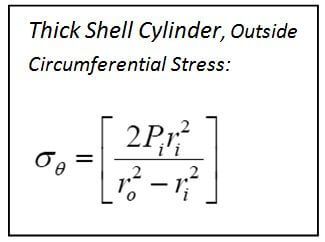
finiANSYS Pipe16 1
/clear,nostart
/PREP7
et,1,16 ! PIPE16 elements
n,1,1
n,2,11
e,1,2
mp,ex,1,30000000 ! Steel
mp,nuxy,1,.3
!
Do=1.0 ! outside diameter
thick=0.1 ! wall thickness
iPress=1000 ! inside pressure
!
Ro=Do/2 ! outside radius
Ri=Ro-thick ! inside radius
!
R,1,Do,thick ! real constants, Do and thick
!
FINISH
!
/SOLU
sfe,1,1,pres,,iPress ! inside pressure
d,1,all
solve
FINISH
!
/POST1
/VIEW,1,1,2,3
/ESHAPE,1
PLESOL,S,1,0,1.0 ! Plot S1 (circumferential)
ETABLE,S1,S,1 ! Component Name Method
ETABLE,ls_3,LS, 3 ! S_hoop at zero degrees
ETABLE,s1_0,NMISC,41 ! S_1 at zero degrees
PRETAB,S1,S1_0,LS_3
! inside stress
sigma_thick_inside=iPress*(Ro**2+Ri**2)/(Ro**2-Ri**2)
! outside stress
r=Ro
sigma_thick_outside=2*iPress*(Ri**2)/(Ro**2-Ri**2)
! simple circumferential stress calc
PR_t=ipress*(Ri/thick)
*status,sigma_thick_inside ! thick-cylinder inside circumferential stress
*status,sigma_thick_outside ! thick-cylinder outside circumferential stress
*status,PR_t ! thin-cylinder circumferential stress
The following results will be listed for circumferential stresses. Note that pressure-only loading in this test means that the first principal stress S1 will be circumferential (hoop) stress:
Element Table Results
PRINT ELEMENT TABLE ITEMS PER ELEMENT
***** POST1 ELEMENT TABLE LISTING *****
STAT CURRENT CURRENT CURRENT
ELEM S1 S1_0 LS_3
1 3555.6 3555.6 3555.6
Inside Stress per Hand Calculation, Thick Cylinder
PARAMETER STATUS- SIGMA_THICK_INSIDE ( 12 PARAMETERS DEFINED)
(INCLUDING 3 INTERNAL PARAMETERS)
NAME VALUE TYPE DIMENSIONS
SIGMA_THICK_INSIDE 4555.55556 SCALAR
Outside Stress per Hand Calculation, Thick Cylinder
PARAMETER STATUS- SIGMA_THICK_OUTSIDE ( 12 PARAMETERS DEFINED)
(INCLUDING 3 INTERNAL PARAMETERS)
NAME VALUE TYPE DIMENSIONS
SIGMA_THICK_OUTSIDE 3555.55556 SCALAR
Thin Wall Cylinder Stress
PARAMETER STATUS- PR_T ( 12 PARAMETERS DEFINED)
(INCLUDING 3 INTERNAL PARAMETERS)
NAME VALUE TYPE DIMENSIONS
PR_T 4000.00000 SCALAR
A test done with PIPE288 elements gave both inside and outside circumferential stresses that were close to the above values when the number of “cells” in the radial direction was set to 9, and KEYOPT(4) was set to use thick cylinder modeling with PIPE288. Users may prefer to use these more capable pipe elements, but should remember to turn on thick cylinder equations and to increase the number of radial divisions, when this matters.
Conclusion | PIPE16 Circumferential Stress
PIPE16 elements will produce circumferential (hoop) stress values based on thick cylinder equations for internal pressure, and report the stress at the outside radius of the pipe. Users should keep in mind that the inside radius circumferential stresses are higher, and may want to perform extra calculations if this is considered to be a concern.
- For guidance on Ansys Post-Processing
- For Support on performing ‘EKILL‘ in Workbench
- APDL Command Objects post-Spectral Analysis
- For Separating DB Database Files from RST Files
- Measuring Geometric Rotation in Mechanical WB
- CAD Geometry Deformation Plasticity


